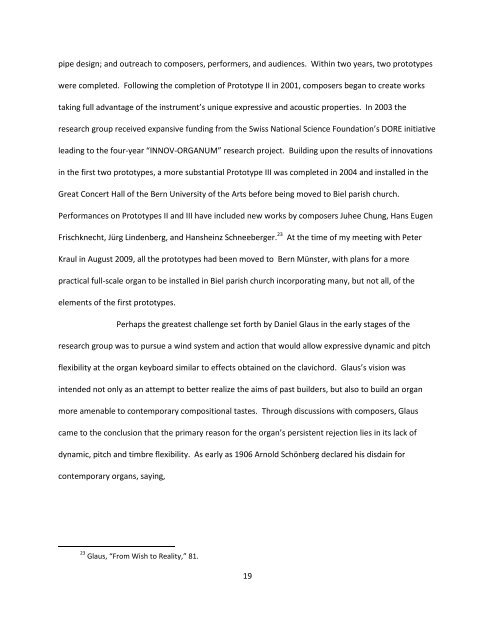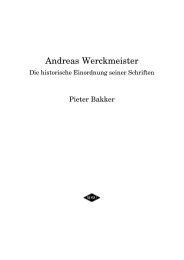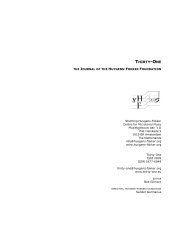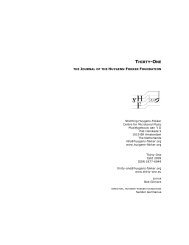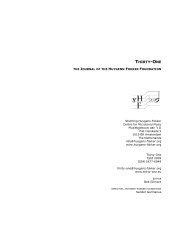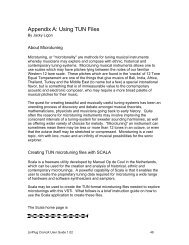Recent Organ Design Innovations and the 21st-century - Stichting ...
Recent Organ Design Innovations and the 21st-century - Stichting ...
Recent Organ Design Innovations and the 21st-century - Stichting ...
You also want an ePaper? Increase the reach of your titles
YUMPU automatically turns print PDFs into web optimized ePapers that Google loves.
pipe design; <strong>and</strong> outreach to composers, performers, <strong>and</strong> audiences. Within two years, two prototypes<br />
were completed. Following <strong>the</strong> completion of Prototype II in 2001, composers began to create works<br />
taking full advantage of <strong>the</strong> instrument’s unique expressive <strong>and</strong> acoustic properties. In 2003 <strong>the</strong><br />
research group received expansive funding from <strong>the</strong> Swiss National Science Foundation’s DORE initiative<br />
leading to <strong>the</strong> four-year “INNOV-ORGANUM” research project. Building upon <strong>the</strong> results of innovations<br />
in <strong>the</strong> first two prototypes, a more substantial Prototype III was completed in 2004 <strong>and</strong> installed in <strong>the</strong><br />
Great Concert Hall of <strong>the</strong> Bern University of <strong>the</strong> Arts before being moved to Biel parish church.<br />
Performances on Prototypes II <strong>and</strong> III have included new works by composers Juhee Chung, Hans Eugen<br />
Frischknecht, Jürg Lindenberg, <strong>and</strong> Hansheinz Schneeberger. 23 At <strong>the</strong> time of my meeting with Peter<br />
Kraul in August 2009, all <strong>the</strong> prototypes had been moved to Bern Münster, with plans for a more<br />
practical full-scale organ to be installed in Biel parish church incorporating many, but not all, of <strong>the</strong><br />
elements of <strong>the</strong> first prototypes.<br />
Perhaps <strong>the</strong> greatest challenge set forth by Daniel Glaus in <strong>the</strong> early stages of <strong>the</strong><br />
research group was to pursue a wind system <strong>and</strong> action that would allow expressive dynamic <strong>and</strong> pitch<br />
flexibility at <strong>the</strong> organ keyboard similar to effects obtained on <strong>the</strong> clavichord. Glaus’s vision was<br />
intended not only as an attempt to better realize <strong>the</strong> aims of past builders, but also to build an organ<br />
more amenable to contemporary compositional tastes. Through discussions with composers, Glaus<br />
came to <strong>the</strong> conclusion that <strong>the</strong> primary reason for <strong>the</strong> organ’s persistent rejection lies in its lack of<br />
dynamic, pitch <strong>and</strong> timbre flexibility. As early as 1906 Arnold Schönberg declared his disdain for<br />
contemporary organs, saying,<br />
23 Glaus, “From Wish to Reality,” 81.<br />
19


